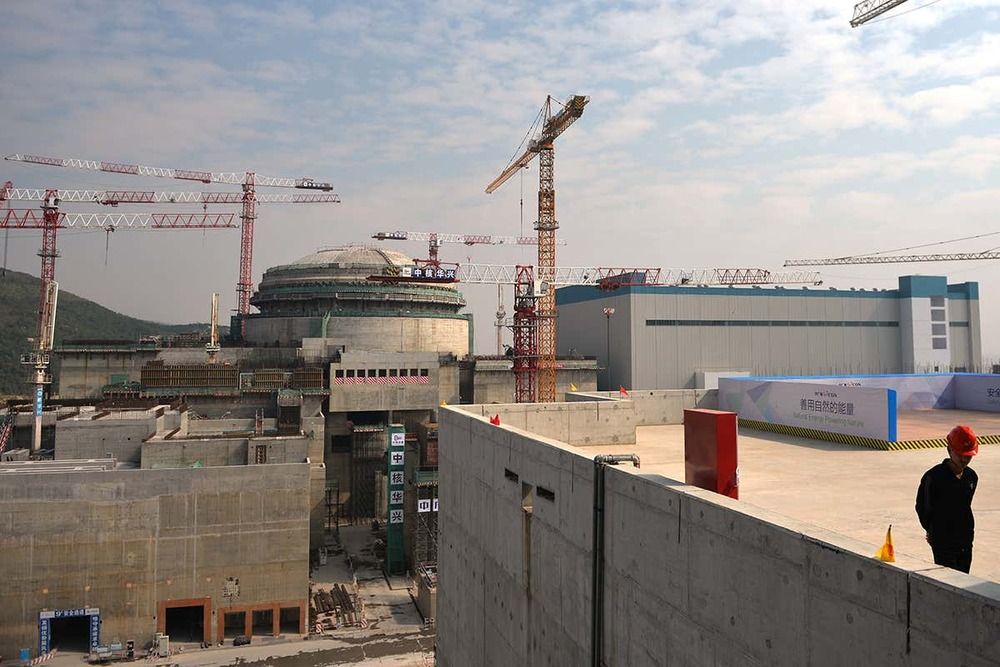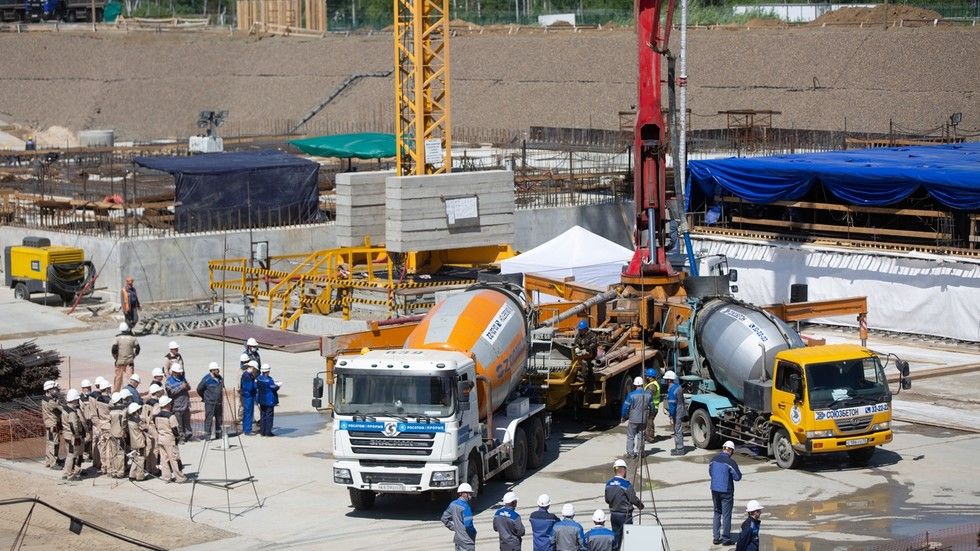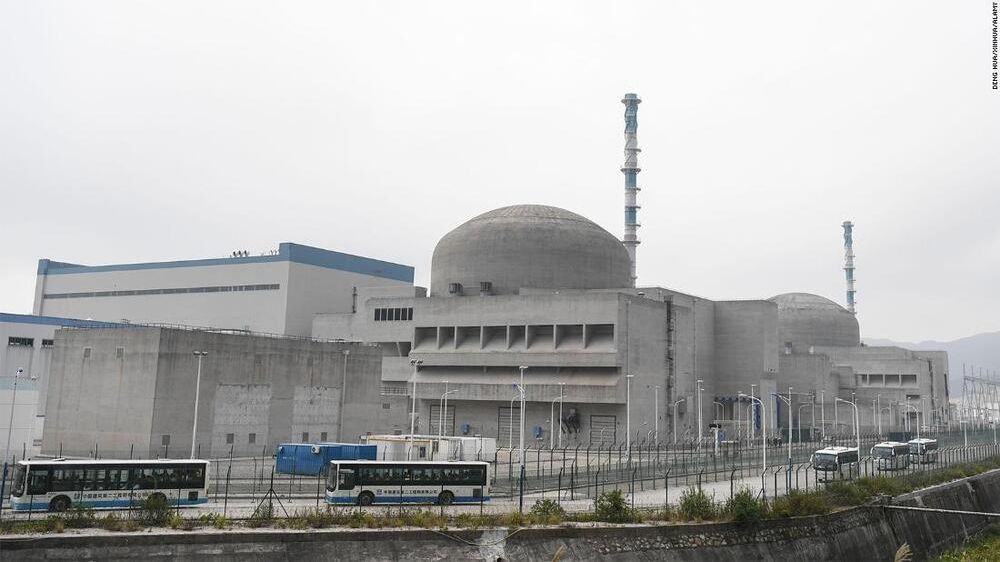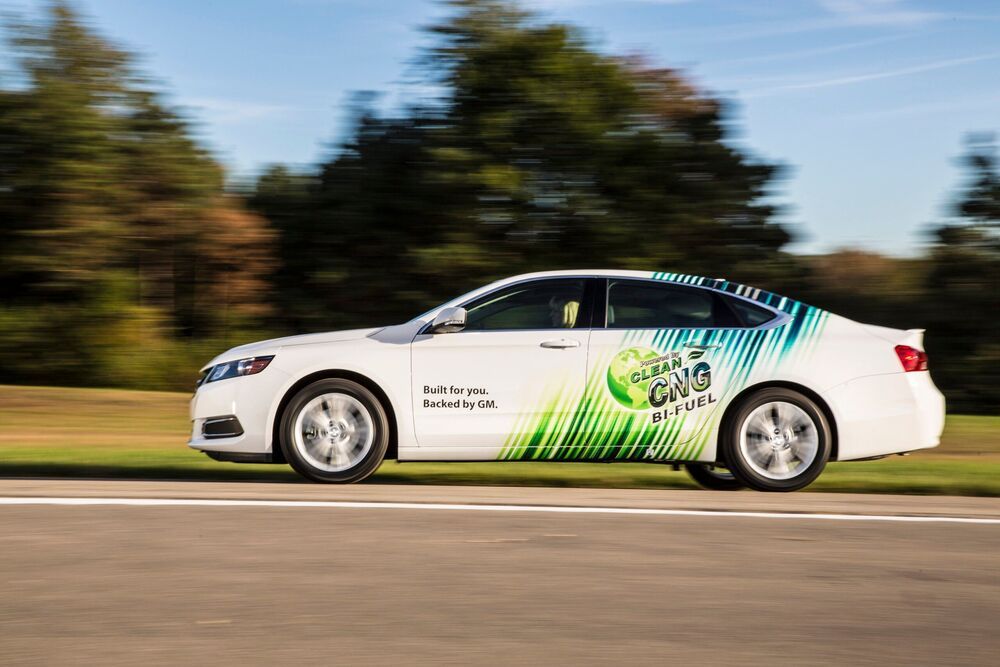The new facility will be built at Culham, home to the UK’s national fusion research programme.
Canadian company General Fusion is set to build a $400m fusion demonstrator near Oxford.


Hopefully it isn’t too bad.
😅
One of the companies involved in a new nuclear reactor at Taishan in Guangdong, China, has written to the US government warning of an “imminent radiological threat” at the plant. The memo from French firm Framatome to the US Department of Energy, first reported by CNN, said Chinese authorities were raising acceptable radiation limits around the power station, to avoid shutting the reactor down. How serious is the issue, and should you be worried?
Do we know what’s causing the problem?
Framatome parent firm EDF, which has a 30 per cent stake in the company that owns the plant, said yesterday that the problem appears to be an issue with one or more of the fuel rods. It appears there is a potential hole in the casing of the fuel rods, which contain the uranium used to create a fission reaction. In a statement, EDF said there had been an “increase in the concentration of certain noble gases in the primary circuit” in reactor number one at the power station. The primary circuit is the part of the plant that transfers heat from the reactor to water, generating steam and producing electricity. The noble gases include krypton and xenon.
After a decade of design and fabrication, General Atomics is ready to ship the first module of the Central Solenoid, the world’s most powerful magnet. It will become a central component of ITER, a machine that replicates the fusion power of the Sun. ITER is being built in southern France by 35 partner countries.
ITER’s mission is to prove energy from hydrogen fusion can be created and controlled on earth. Fusion energy is carbon-free, safe, and economic. The materials to power society with hydrogen fusion for millions of years are readily abundant.
Despite the challenges of Covid-19, ITER is almost 75 percent built. For the past 15 months, massive first-of-a-kind components have begun to arrive in France from three continents. When assembled together, they will make up the ITER Tokamak, a “sun on earth” to demonstrate fusion at industrial scale.
For a nuclear fusion project that will replicate reactions in the SUN to create ‘the ultimate clean energy source…
The world’s largest magnet, a decade in the making, is ready to be shipped to France where it will form the centrepiece of a project to replicate the power of the sun.
This will form a central part of ITER, a £17 billion ($23.95 billion) machine that creates fusion energy on Earth, built in France by 35 partner countries to find a ‘true renewable power’.
The hydrogen fusion system is a test to prove the technology can work and that power can be created and controlled to provide carbon-free safe electricity.

The BREST-OD-300 reactor is planned to start operating in 2026. A fuel production facility will be built by 2023 and the construction of an irradiated fuel reprocessing module is scheduled to start by 2024, Rosatom said. The design of the lead-cooled reactor is based on the principles of so-called natural safety, which makes it possible to abandon the melt trap.
“The successful implementation of this project will allow our country to become the world’s first owner of the nuclear power technology which fully meets the principles of sustainable development in terms of environment, accessibility, reliability, and efficient use of resources,” said Rosatom’s Director General Alexey Likhachev. “Today, we reaffirm our reputation as a leader in world progress in the nuclear technologies, that offers humanity unique solutions aimed at improving people’s lives,” he added.
According to President of the Kurchatov Institute Mikhail Kovalchuk, the project is aimed at bringing nuclear power to a new level.

History seems to keep repeating when it concerns nuclear fission. Hopefully, no one gets hurt.
The US government has spent the past week assessing a report of a leak at a Chinese nuclear power plant, after a French company that part owns and helps operate it warned of an “imminent radiological threat,” according to US officials and documents reviewed by CNN.
The warning included an accusation that the Chinese safety authority was raising the acceptable limits for radiation detection outside the Taishan Nuclear Power Plant in Guangdong province in order to avoid having to shut it down, according to a letter from the French company to the US Department of Energy obtained by CNN.
Despite the alarming notification from Framatome, the French company, the Biden administration believes the facility is not yet at a “crisis level,” one of the sources said.

Circa 2015
With the 2015 Chevrolet Impala Bi-Fuel, drivers can top off their tank with waste byproducts, almost like Dr. Emmett Brown — aka “Doc” — did with his time-traveling DeLorean in the movie “Back to the Future.”
But instead of dumping banana peels and backwash from a beer can directly into the DeLorean’s “Mr. Fusion” reactor (see the video clip below), Impala Bi-Fuel owners simply fill up on natural gas, some of which comes from biogas, Chevy points out in its announcement about the new full-size sedan arriving in dealerships soon.
Biogas is derived from the methane that microrganisms emit after breaking down organic waste material in an oxygen-less environment. The process is called anaerobic digestion.

NASA is already so impressed by the Starship that it has contracted SpaceX to build a lunar-landing version of it to return astronauts to the moon as early as 2024. The selection has enraged Musk’s rivals such as Blue Origin’s Jeff Bezos  Jeffrey (Jeff) Preston BezosSeat on Bezos-backed space flight sells for million at auction Researchers: Wealth accumulation at Ivy League presents ‘fundamental threat to our democracy’ Democrats reintroduce bill to create ‘millionaires surtax’ MORE and has perturbed some members of Congress. Both have only themselves to blame — Blue Origin for offering an inferior design and Congress for underfunding the Human Landing System project.
Jeffrey (Jeff) Preston BezosSeat on Bezos-backed space flight sells for million at auction Researchers: Wealth accumulation at Ivy League presents ‘fundamental threat to our democracy’ Democrats reintroduce bill to create ‘millionaires surtax’ MORE and has perturbed some members of Congress. Both have only themselves to blame — Blue Origin for offering an inferior design and Congress for underfunding the Human Landing System project.
Military technology development has often been defined by the advent of new ways to transport people and cargo. The racing galleon of the 16th century became the frigates and ships of the line that defined naval warfare in the 18th and early 19th centuries. The steam engine and iron and steel armor led to the dreadnoughts of the early 20th century. Modern warships incorporate nuclear power. Air travel has caused the same sort of evolution, from the motorized kites of World War I to modern jets that can deliver destruction and death from thousands of miles away.
Now, space transportation technology is poised to cause a similar revolution in the military’s ability to defend the United States and its allies and to inflict mayhem and death on any enemy that would propose to make war on America. The great irony is that the Starship will be used by a branch of the military that Musk once compared to Starfleet, the fictional service depicted in the “Star Trek” television shows and movies. The thought would likely bring a smile to the face of the franchise’s creator, Gene Roddenberry, in whatever afterlife one envisions him inhabiting.
The latest from Calico. A bit technical.
Reprogramming of ordinary somatic cells into induced pluripotent stem cells (iPSCs) was initially thought to be a way to obtain all of the patient matched cells needed for tissue engineering or cell therapies. A great deal of work has gone towards realizing that goal over the past fifteen years or so; the research community isn’t there yet, but meaningful progress has taken place. Of late, another line of work has emerged, in that it might be possible to use partial reprogramming as a basis for therapy, delivering reprogramming factors into animals and humans in order to improve tissue function, without turning large numbers of somatic cells into iPSCs and thus risking cancer or loss of tissue structure and function.
Reprogramming triggers some of the same mechanisms of rejuvenation that operate in the developing embryo, removing epigenetic marks characteristic of aged tissues, and restoring youthful mitochondrial function. It cannot do much for forms of damage such as mutations to nuclear DNA or buildup of resilient metabolic waste, but the present feeling is there is nonetheless enough of a potential benefit to make it worth developing this approach to treatments for aging. Some groups have shown that partial reprogramming — via transient expression of reprogramming factors — can reverse functional losses in cells from aged tissues without making those cells lose their differentiated type. But this is a complicated business. Tissues are made up of many cell types, all of which can need subtly different approaches to safe reprogramming.
Today’s open access preprint is illustrative of the amount of work that lies ahead when it comes to the exploration of in vivo reprogramming. Different cell types behave quite differently, will require different recipes and approaches to reprogramming, different times of exposure, and so forth. It makes it very hard to envisage a near term therapy that operates much like present day gene therapies, meaning one vector and one cargo, as most tissues are comprised of many different cell types all mixed in together. On the other hand, the evidence to date, including that in the paper here, suggests that there are ways to create the desired rejuvenation of epigenetic patterns and mitochondrial function without the risk of somatic cells dedifferentiating into stem cells.

Article I just wrote about how going to Mars is actually good for protecting life on Earth, too.
People often lump going to Mars or the Moon into a this/that fight when it comes to bettering the life of the Earth and its inhabitants. But, it’s not that simple.
The technology we master in the pursuit of space colonization (starti n g at the Moon and Mars / space stations) will serve to advance that on Earth. The things we learn will help provide a guide for what to do on this future planet, and not just life beyond it. Sure, in-situ resource utilization/production will generate rocket fuel on extraterrestrial bodies. But, things like the NASA Kilopower nuclear reactor can lay the groundwork for alternative energies deployed on Earth at scale. I imagine thorium reactors will follow suit while we still try to deploy fusion at a consumer scale and not just a research basis.
That’s just energy. Now picture 3D printing habitat development and how that can impact production of low-cost housing on Earth and construction projects that can have shapes previously thought impossible or too-high a cost that are more efficient and allow for artists to sculpt new buildings like a sculpture rather than a boring block.